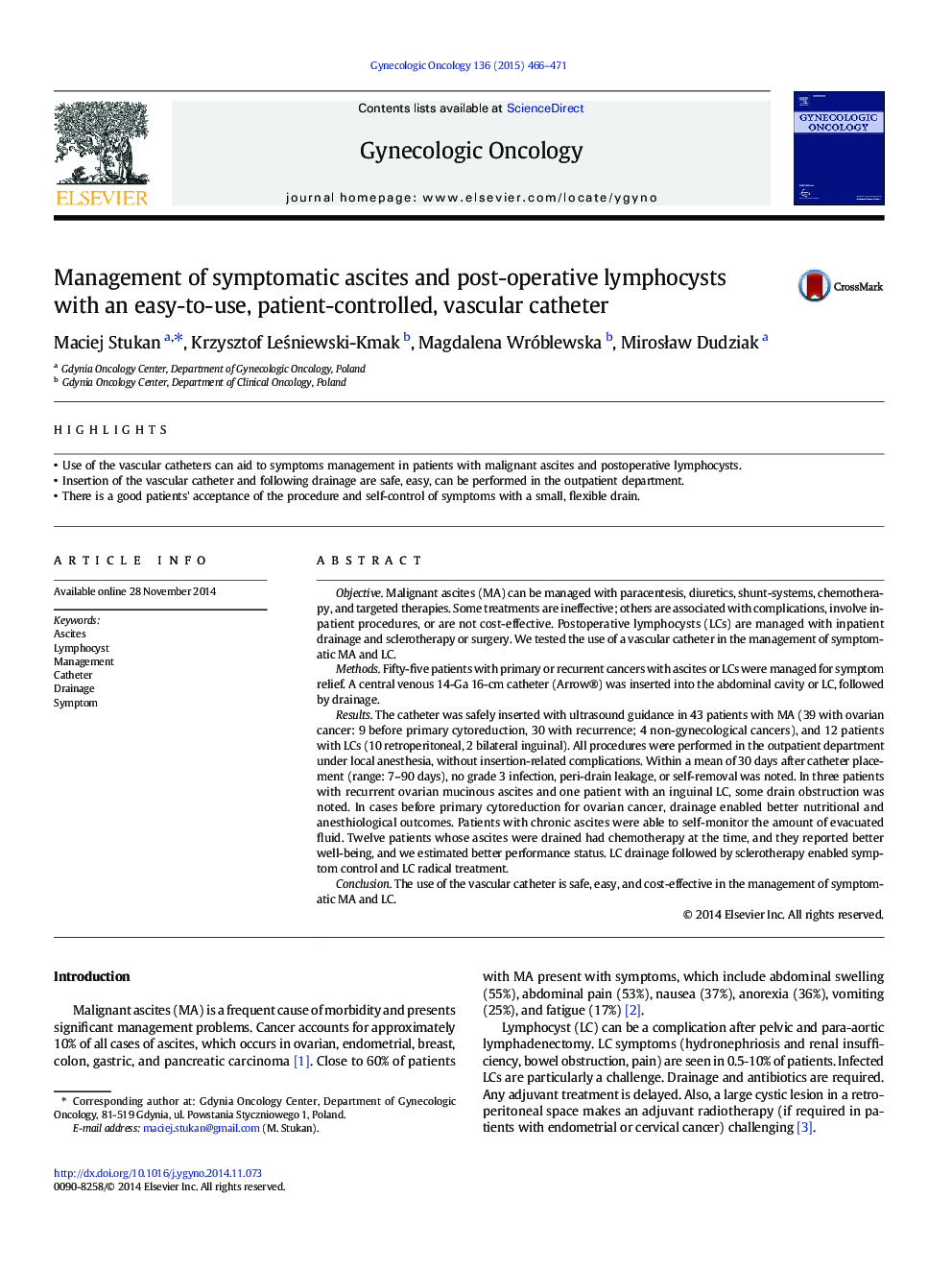| کد مقاله | کد نشریه | سال انتشار | مقاله انگلیسی | نسخه تمام متن |
|---|---|---|---|---|
| 3945631 | 1254278 | 2015 | 6 صفحه PDF | دانلود رایگان |
• Use of the vascular catheters can aid to symptoms management in patients with malignant ascites and postoperative lymphocysts.
• Insertion of the vascular catheter and following drainage are safe, easy, can be performed in the outpatient department.
• There is a good patients' acceptance of the procedure and self-control of symptoms with a small, flexible drain.
ObjectiveMalignant ascites (MA) can be managed with paracentesis, diuretics, shunt-systems, chemotherapy, and targeted therapies. Some treatments are ineffective; others are associated with complications, involve inpatient procedures, or are not cost-effective. Postoperative lymphocysts (LCs) are managed with inpatient drainage and sclerotherapy or surgery. We tested the use of a vascular catheter in the management of symptomatic MA and LC.MethodsFifty-five patients with primary or recurrent cancers with ascites or LCs were managed for symptom relief. A central venous 14-Ga 16-cm catheter (Arrow®) was inserted into the abdominal cavity or LC, followed by drainage.ResultsThe catheter was safely inserted with ultrasound guidance in 43 patients with MA (39 with ovarian cancer: 9 before primary cytoreduction, 30 with recurrence; 4 non-gynecological cancers), and 12 patients with LCs (10 retroperitoneal, 2 bilateral inguinal). All procedures were performed in the outpatient department under local anesthesia, without insertion-related complications. Within a mean of 30 days after catheter placement (range: 7–90 days), no grade 3 infection, peri-drain leakage, or self-removal was noted. In three patients with recurrent ovarian mucinous ascites and one patient with an inguinal LC, some drain obstruction was noted. In cases before primary cytoreduction for ovarian cancer, drainage enabled better nutritional and anesthiological outcomes. Patients with chronic ascites were able to self-monitor the amount of evacuated fluid. Twelve patients whose ascites were drained had chemotherapy at the time, and they reported better well-being, and we estimated better performance status. LC drainage followed by sclerotherapy enabled symptom control and LC radical treatment.ConclusionThe use of the vascular catheter is safe, easy, and cost-effective in the management of symptomatic MA and LC.
Journal: Gynecologic Oncology - Volume 136, Issue 3, March 2015, Pages 466–471
